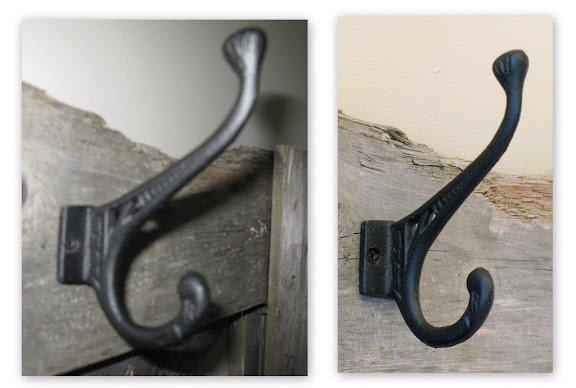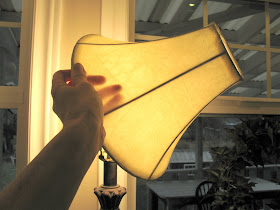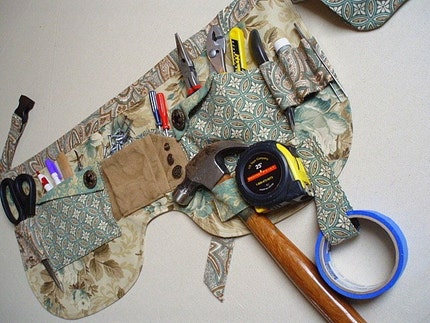Funky Junk Interiors and Mustard Seed Creations!
This week, Miss Mustard Seed is having a guest post on organizing! Perfect topic for this time of year.
This week on Funky Junk, we're continuing with Part 2 of
~ Blog Photography 101 ~
Great shots from a point and shoot
Disclaimer: I am not a pro photographer. I've never even taken a course. The info I'm providing you is simply from my own personal experience, as well as tips from friends and online resources. If you can add/suggest additional related info, I very much welcome your input in the comments. Thank-you!
2. Proper lighting. - today's lesson.
To come:
3. Using photo enhancing software.
4. Shooting with good backgrounds and interesting angles.
5. Getting to know the settings on your camera.
~ Part 2 - Lighting ~
It goes without saying, one of the most difficult things to overcome with blog photography are indoor shots. And since we're always photographing our projects inside our homes, we're faced with this issue with every click.
We, as blogging decorators, don't own all the fancy gear high end photographers use, so what does a person do with a simple point and shoot? Can we achieve good indoor results with a simple camera? The answer is YES. And here's how I do it.
~ 1. Turn off the flash. ~
Flashes are your worst enemy and cause alot of issues with your pictures. A direct flash over exposes your subject, washing away all that precious colour, AND creates nasty dark shadow lines behind your subject.
Another reason flashes don't work for rooms in particular is, the light is too far away from your subject. When you take a photo, the light only travels 1/4 of the distance that you're standing from your subject. You need the light ON your subject. Makes you wonder why cameras even have flashes! (I think it's for emergency situations myself)
Do you remember seeing old photos where the photographer would hold the flash away from the camera? With the flash further away from the lens and closer to your subject, it's possible to bounce the light off a ceiling or wall, giving you a much more softer light. This is called diffusing the light which we'll get into in a moment.
Higher end cameras carry flashes that help you to utilize light diffusing tricks. However point and shoots don't. So, we need to create our own additional proper diffused lighting. Incidently, pro photographers use additional lighting too. :)

Both pictures were taken on Automatic. No attempt was made to create a bad before pic. I simply freeheld the camera as still as possible, and shot the picture with the flash on and this was the result. Nasty!
Problems:
picture blurred from camera movement, dark shadows, over exposed colour tones.
Changes made to pic on right:
tripod, no flash, extra light source in the room
Result:
dark shadows disappeared, colours were maintained
Although I don't regard the photo on the right as one of high quality, it's much improved in mere seconds by those simple tweaks anyone can master immediately. How to flip a standard photo into a quality one is forthcoming in another Workshop installment.
~ 2. Add light. ~
a) Move it to the light.
Utilize natural lighting whenever possible. Positioning your subject near a window or open door is a great idea, as long as you shoot facing away from the window. If you shoot towards a sunlit window, you'll capture a silhouette of your object. Always shoot away from the light source, but make sure your subject is getting the light in 'it's face,' not the back of 'it's head.'
Outdoor diffused photos are the best!
Outside light is even better, as long as the light is diffused. For many of my own shots such as the button one above , I use my outdoor patio, which has a white plastic corrugated roof. This allows the light to penetrate through, diffusing it beautifully. I never add additional lighting when shooting in this location.
b) Bring in additional light
When you can't move your subject outdoors, you're forced to deal with an interior shot. Meet my two best photography buds, Tripod and Lamp Tree. Good thing they're skinny because they generally live in the middle of my livingroom.
Don't have a lamp tree? They are cheap to purchase. What I like about it is the dual lights I can bounce off each other. When I get a better camera one day, I may go more pro, but this is working today. I'll tell you how I use it below.
Nerd tip: Did you know lighting inside a home generally casts a yellow glow on your photos, while a flash on a camera won't? Experiment with the compact fluorescent bulbs as well as others. You'll get different results!
c) Diffusing the light
In order to produce a soft light which produces soft shadows, you need to 'spread the light out' with a diffuser. A diffuser actually increases your light by widening or spreading the beam.
Here's a setup of how a pro would take an interior shot. This light is diffused with a translucent umbrella. Other tricks are used to spread the light too. Videos links are below.
One way I diffuse light - blurry pic due to NO tripod. :)
Here is my method of diffusing the light. An oriental screen from a thrift is used with the lamp tree. This setup was used to capture pictures of my Christmas tree. Do you remember even ONE shot of someone's tree in a well lit room?
Result of diffused lighting - photo has been software tweaked
This was my shot. No dark room. No yellowish overtone. No washing out of colours. From my little point and shoot.
However, 99% of the time I diffuse the lamp tree light in a different way:
- move it abit further away from the subject
- cast one light on the ceiling
- cast one light on the floor
This method has the light bouncing off the floor and ceiling, then back onto your subject. You can increase the light bounce even more. That part will be explained abit more further down.
Important! Ensure your subject is NOT being hit directly with the beam of light. This will cause all the same issues a flash will.
Here's another way I diffuse light. I simply remove a lampshade and utilizing that very lamp, move the shade around to cast the right amount of light on my subject.
If you click the title link above, it will take you to a wonderful site that has very short but excellent teaching videos on how to diffuse light with simply made things. Watch #2 and #4. You will better see what diffusing is all about and realize you don't need alot of high end equipment to get great results.
Point of interest - on one of my junkin' days, I came across a filming of a movie on this great building. I found it interesting how they diffused the light. They used this method even during daylight, so it just goes to show how important additional light sources are.
~ 3. Use that tripod ~
Indoor pictures slow down the shutter speed, and ANY movement, even breathing or clicking your camera, can cause your camera to move, resulting in a blurry picture.
Stabilize your camera for indoors, without fail. And as Songbird suggested in comments in Part 1, you can also use the auto timer in your camera to actually do the click so your camera is 100% shake free. Brilliant suggestion for a fussy indoor shot!
Something is still missing. BIG time!
Your camera light settings as well as a photo editing software will also highly dictate the end result of your interior pictures. I am addicted to these two steps. So don't get too discouraged if your pics are still in the ehhhh realm. You really need all of this stuff to make your photos sing.
Recap:
To get the very best indoor pictures possible:
1. Turn off the flash.
2. Stabilize your camera so it's 100% shake free.
3. Push back curtains, flick on all lights, open doors.
4. Bring your subject closer to the natural light if possible.
4. Use another source of light and diffuse the light beam in some way, never hitting your subject with the direct beam.
Me ~ "Miss Mustard Seed, what valuable tips can you share on the lighting topic, from your own experience and photography course you've taken?"
MMS ~ “Donna, I love your creativity with diffusing the light. That screen idea was brilliant!
I am fortunate to have a really nice camera and a speedlight flash to go with it. I can point the flash straight up and “bounce” the light off the ceiling. It floods the space with a soft white light and allows me to shoot in rooms with low light or on gray days.
If you don’t have a diffuse for your flash, you can use a piece of white printer paper. Just hold it in front of your flash or loosely tape it on and it will diffuse the light nicely. I’ve never tried that on a point-and-shoot flash, but it works great on my speedlight.
I am going to purchase a diffuser for my flash in a few weeks and I am considering investing in some lighting as well. All of that is certainly not necessary for the average blog photographer, though. In addition to my blog, I have an Etsy store, website and marketing materials that I use my photography for, so quality pictures are a must for my business. “
Seek out an additional light source and light up those interiors! Using your tripod, pick a subject and experiment. Y ou will be pleasantly surprised with the results. :)
Assignment #1 from last week: reducing camera shake
How did you do?
Did you see a result with your camera perfectly still?
Any comments/questions on this week's installment?
If you have any samples of last week's assignment, feel free to add the url to your comment so we can check it out. :)

Quality work aprons by Make Mine Beautiful
The work apron giveaway event
has been moved to this weekend's SNS with an added surprise you don't want to miss. :) Hope to see you there!
Click HERE to check out the amazing selection and new stock!











Great info again! I have yet to get a tripod, but want to soon. I did not know about light diffusing, great tip. What kind of camera does Miss Mustard seed use, it sounds great! Thanks for all the tips.
ReplyDeleteThese are great tips! I have a Canon Rebel and I have to say, I don't take full advantage of all the things it can do compared to a point and shoot. I'm forever learning...
ReplyDeleteI love the course!! AND I really need it! Can't wait to learn more!
ReplyDelete- Christin
Some great info. I have outdoor photography down to a science, but the indoor stuff is a whole new ball of wax for me. Thanks for the tips. I've had those tree lights sitting in my garage for other uses, but didn't think to bring them indoors. I think I'll grab some CFLs and put them in there to see how good they work. One of my problems is that my house has too much natural light, so there's always shadow issues to deal with. I'll get it one of these days.
ReplyDeleteThank you for going through all of this work to bring us this series.
Great advice!
ReplyDeleteAs someone with a sort of 'good' camera, these tips really apply to everyone and every camera. Excellent job :)
Donna, your tutorial from last week definitely helped me! I just posted about it on my blog: http://pursuitofscrappyness.blogspot.com/2010/03/take-picture-it-lasts-longer.html
ReplyDeleteThank you so much for this series - I really, really need it and I appreciate it so much! I can't wait to try out this week's assignment - I have been baffled by lighting?
A question: Does it help to have one of those "natural light" bulbs that are supposed to bring out the true colours of a room instead of casting that yellow glow?
i used to always try and wait until the daytime to take all of my pics, but since i work full-time during the week, then is next to impossible. i'm also a night owl so it's extremely difficult to take daytime shots. i recently purchased an ottlite and it has made all the difference in the world! they sell them at joann's, but i was lucky and found mine at costco for only $19. i bought the tabletop lamp and it is great to use taking closeups of my flowers or other small projects in macro mode. it doesn't cast a yellow hue and it looks like it daytime. when i'm taking pictures of bigger projects, i just carry the lamp around the house with me and hold it up with one hand and take the picture using my other hand and a tripod.
ReplyDeletei'm loving this series donna. thanks for sharing all of your wonderful tips! you give us other point and shooters hope! :o) thanks for showing us how to work with what we have.
I really needed that. I feel...no....I know my pictures are CRAZY sometimes. It takes away from the beauty and hard work, if you don't have the right lighting. THANKS...your faithful follower!
ReplyDeleteI did get a small tripod which is perfect for my point and shoot. Now I have to figure out how to stop of diffuse my auto flash!!?? Thank you for doing this series!! So helpful!
ReplyDeleteHugs
SueAnn
Another awesome post! Thank you for sharing. Good pictures are so important. Now I can spend less time on taking the shots than completing the projects! I did, however, order a new camera... I looked up the reviews on the one I have been using and the general advice was, "don't buy it, it takes horrible pictures". : )
ReplyDeleteGreat tips as usual, and thanks for including my little tip as well.
ReplyDeleteSince I can't shut up, I'll add one to the mix now too. Almost all point and shoots have manual settings too. If you are shooting inside with additional artificial light it might be a good idea to experiment with changing the white balance setting. Tungsten is the one you would use when you have yellow light from candescent bulbs, fluorescent, well that one is for fluorescent light. Sometimes changing the setting doesn't improve much, but on other occasions it really helps. If you have your set up ready it is just a few clicks on your menu to see if playing with the white balance helps.
Oh, gosh there you have it, shooting my mouth off too early. I just realized that your next episode is on the light settings. Sorry! Consider my previous comment as not posted.
ReplyDeleteI have to try the first two tips this weekend. We have one of those lights, but I may try a floor lamp I have with the shade removed. Thanks for another great tip, Donna!
ReplyDeleteI LOVE this series !
ReplyDeleteI'm loving this Donna. However, I'm so bad at all of this that I don't even know WHEN it's a good picture. Can you do a workshop on how to get a creative eye?? LOL! I've started using some of my photo editing options on my Mac. That seems to help.
ReplyDeleteWith the lamp shade approach, do you you change the light bulb? Everything seems to turn a peachy/yellow. If so, what kind of bulb do you use?
Thanks MMS for the tip with the paper!!! I have a brand new camera, Nikon D5000. I'm just learning how to use the thing. There are lots of bells and whistles on it. Thank goodness they included a DVD on how to use it. The manual is huge! And I don't do manuals very well.
Donna, you are fabulous for doing this for us!!!
IHATEMYCAMERA! This series has me reevaluating the user. Very insightful tips.
ReplyDeleteThis workshop is so helpful. Thank you!! Last week I concentrated on bracing my camera before taking the shot and the pics I made for my blog already looked better than usual! I do have a tripod but I'm missing a part of it -- I plan to dig that out of my craft room this weekend!
ReplyDeleteHi gang!
ReplyDeleteI often wonder if this information is delivered 'too dry'. I'm glad to see your pounding through it and getting some value through the nerd phase. :)
Thanks for the continued kudos! I can't respond to all of you right now however please know I'm reading and taking mental notes on all your thoughts. You make me smile. :)
FJ Donna
Lots of great tips. I need all I can get. I can't find a way to turn off my flash, and I(my husband)does have those lights in the garage. I have been thinking of gettin a tripod and will now. I have to go back and find part I.
ReplyDeleteThanks for the help.
Be sure you do a custom white balance if you're going to mix tungsten and natural light or the colors will end up pretty freaky! :) I find it easier to do one or the other if I can.
ReplyDeleteAWESOME!! Thanks for the great tips!!
ReplyDeleteCheck out my awesome GIVEAWAY
~Morgan
Meet Virginia Crafts
Meet Virginia's Etsy Shop
Thank you so much for this!
ReplyDeletetake care
Kristin
I have been holdin' my breath all week...LOL! Light sources -- off to find em. I have a mickey lamp from when the kid's were little -- I think he has a new purpose...
ReplyDeletewhat awesome advice! i am going to be working with light and trying some new settings on my camera i have had for oh about three years! thanks for the post!
ReplyDelete